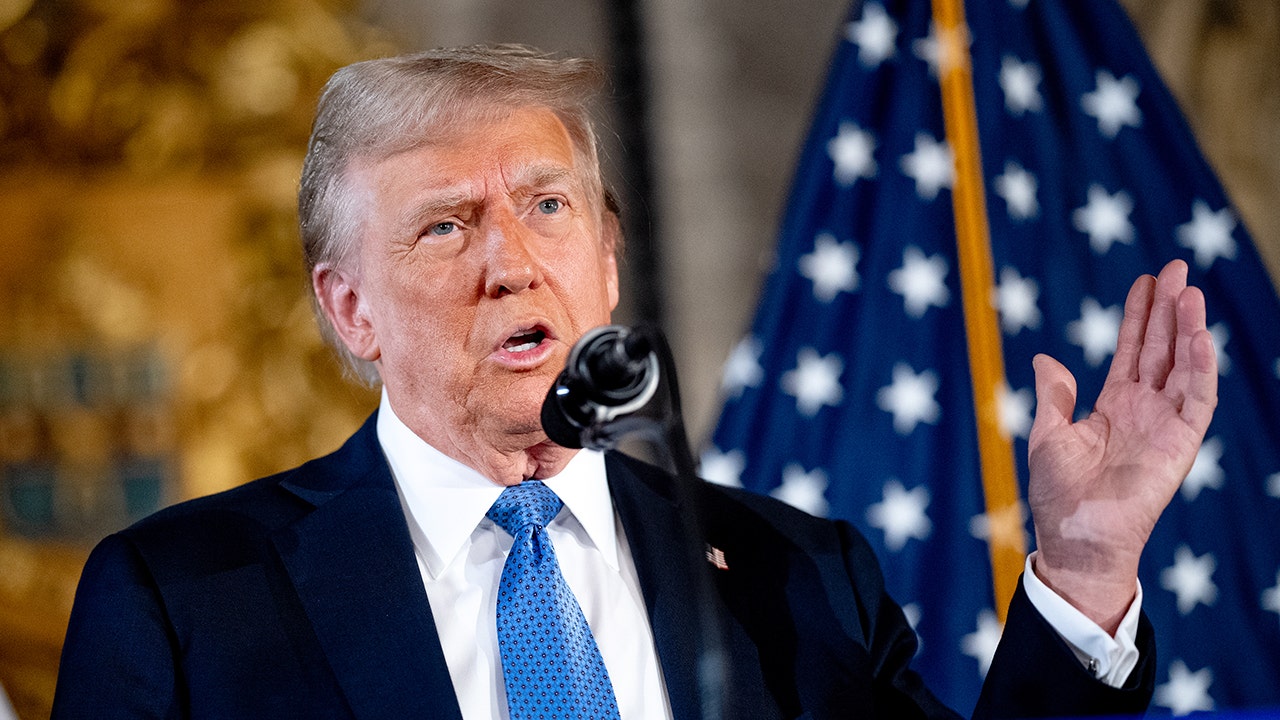Reporting Stefania Spezzati, Oliver Hirt and Elisa Martinuzzi; additional reporting by John O’Donnell; Editing by Paritosh Bansal and Nick Zieminski
World
Exclusive: Swiss authorities, banks mull new rules to prevent bank runs -sources
/cloudfront-us-east-2.images.arcpublishing.com/reuters/LWLVNP5SNNKLTMRPYOB3TYHX4I.jpg)
[1/3]A logo of Swiss bank UBS is seen in Zurich, Switzerland March 29, 2023. REUTERS/Denis Balibouse Acquire Licensing Rights
LONDON/ZURICH, Nov 2 (Reuters) – Swiss authorities and lenders, including UBS (UBSG.S), are discussing new measures to prevent bank runs after Credit Suisse’s rescue earlier this year, four sources familiar with the matter said, a move that could affect billions in deposits.
The talks, which have not been previously reported and are part of a broader review of the country’s banking rules, are intended for the top Swiss banks and could target mainly their wealth clients, two of the sources said.
Among the measures being discussed is the option to stagger a greater portion of withdrawals over longer periods of time, one of the sources said. Imposing fees on exits is also an alternative being discussed, two of the sources said.
Rewarding clients who tie up their savings for longer with higher interest rates is being debated, one of the sources said.
Discussions are in the early stages, according to two sources. The Swiss National Bank and the Swiss Finance Ministry are part of the conversations with lenders, one source said.
A representative for the finance ministry said that the issue of bank runs is part of an overall evaluation of the too-big-to-fail regulatory framework in Switzerland. The Swiss government is due to publish a report in spring next year, he added.
The SNB said the review of too-big-to-fail rules, which focuses on so-called systemically important banks, is ongoing. The central bank declined to comment on ongoing work.
UBS declined to comment.
Reuters could not determine which other banks were involved in the conversations with Swiss authorities.
In Switzerland, UBS, Raiffeisen Group, Zürcher Kantonalbank and PostFinance are deemed systemically important lenders as their failure could cause serious damage to the country’s economy and financial system.
A spokesperson for PostFinance said it is not involved in the discussions while a spokesperson for ZKB declined to comment. A representative for Raiffeisen did not have an immediate comment.
DEPOSIT RUNS
Earlier this year, some regional U.S. banks and Credit Suisse suffered massive deposit runs, causing some to fail and regulators to intervene to prevent a broader financial crisis.
Regulators worldwide have since been grappling with the risk of bank runs, which in the era of digital banking have accelerated in speed.
In the case of Credit Suisse, the Swiss lender suffered unprecedented outflows and came close to a disorderly wind-down in March. Wealth managers tend to have a greater concentration of deposits than some of the retail banking competitors, which emerged as a weakness for the lender.
In the last three months of 2022, the bank, at the time Switzerland’s second-largest lender, was hit by 111 billion Swiss francs of outflows. Another 61 billion Swiss francs left in the first quarter, with the wealth unit which caters to affluent clients hit the hardest.
Its near-implosion prompted the SNB to step in with emergency funding and to facilitate its takeover by UBS, making the country’s biggest bank even larger.
While it’s early days, the measures under discussion in Switzerland are making some people nervous.
They risk penalizing Swiss banks if they were to be introduced only in Switzerland, one of the sources said.
UBS is trying to attract customers with above-market rates on deposits, Reuters reported in October.
The new rules could dent competitiveness or, in a more extreme scenario, push clients to withdraw their money preemptively, the person added.
Our Standards: The Thomson Reuters Trust Principles.

World
Italian state railways plans 1.3 bln euro investment in solar plant

World
Christmas in Puerto Rico is a 45-day celebration with caroling, festive decorations, family feasts and more

Christmas, Navidad in Puerto Rico, extends far beyond Dec. 25.
The island proudly proclaims itself as having the “longest holiday season in the world,” according to the website Discover Puerto Rico.
On average, the holiday festivities in Puerto Rico last about 45 days, per the source, commencing right after Thanksgiving, and stretching all the way through mid-January.
The Christmas season in Puerto Rico typically lasts around 45 days. (iStock)
HOW TO SAY ‘MERRY CHRISTMAS’ IN 10 LANGUAGES TO FRIENDS AROUND THE WORLD
The holiday season in Puerto Rico is full of rich traditions beloved by families.
One tradition those who visit Puerto Rico will immediately notice during the holiday season is decorations.
In Puerto Rico, decorations are typically put up by Thanksgiving, and kept up until the season concludes in mid-January, with opportune picture moments at every corner.
Parrandas, Christmas caroling, is a holiday staple.
17 SECRET TRAVEL TIPS FOR FALL AND WINTER THAT AREN’T SO SECRET AFTER ALL
Carolers choose houses of family and friends to visit, typically starting around 10 p.m., performing aguinaldos (traditional Christmas songs), with not only their voices, but often with instruments as well, according to Discover Puerto Rico.
The group you begin caroling with is likely not the same group you end with.
In Puerto Rico, when carolers visit a house, they’ll often stop inside for conversation, food and drink before moving to the next residence.

Coquito is a popular beverage enjoyed during the holiday season in Puerto Rico. Coconut, vanilla and rum are among the ingredients. (Mayra Beltran/Houston Chronicle via Getty Images)
Usually, the residences of the house visited will join the group for the next house, according to Discover Puerto Rico.
CHRISTMAS TREES IN GERMANY WERE DECORATED WITH APPLES INSTEAD OF ORNAMENTS IN THE 1600S FOR ‘ADAM AND EVE DAY’
A night of serenading loved ones can last quite a while, often stretching into the early morning hours of the following day, according to the source.
The biggest day of the holiday season in Puerto Rico actually isn’t Christmas, but instead, the night before.
In Puerto Rico, Dec. 24 is Nochebuena. On that day, loved ones gather for the exchange of gifts, caroling and a large feast.
Many families will also attend a midnight Mass on the day, known as Misa de Gallo.
FLIGHT ATTENDANTS REVEAL THE SURPRISING DAY TO TRAVEL AHEAD OF THE CHRISTMAS RUSH
After Christmas passes, the festivities go on in Puerto Rico.
Another big event in the holiday lineup is Three Kings Day on Jan. 6, a holiday that “commemorates the visit that the Three Wise Men paid to Jesus after his birth,” according to Discover Puerto Rico.
On the eve of the day, children fill up a shoebox with grass to be left for camels to munch on while the Three Kings leave behind gifts for them, according to PuertoRico.com.
For a particularly festive Three Kings Day, Juana Díaz is the place to go, as it hosts the largest celebration in Puerto Rico for the holiday. In Juana Díaz, there is an annual festival and parade in honor of Three Kings Day that brings together over 25,000 people every year, according to Discover Puerto Rico.

Gifts are primarily exchanged between loved ones on Christmas Eve in Puerto Rico. (iStock)
Then, eight days later is Octavitas, a post-holiday celebration where families get together and celebrate one last time for the season.
The end of the holiday season is marked with the San Sebastián Street Festival.
This festival, spanning over multiple days, takes place in Old San Juan, and is filled with live music, dancing, shopping and parades.
World
Small plane crashes into Brazil town popular with tourists, killing 10

Twin-engine plane crashed in largely residential neighborhood of Gramado shortly after takeoff, authorities say.
A small plane has crashed into a tourist hotspot in southern Brazil, killing all 10 people on board and injuring more than a dozen people on the ground, officials have said.
The twin-engine Piper PA-42-1000 hit the chimney of a home and the second floor of a different house before crashing into a shop in a largely residential neighbourhood of Gramado shortly after takeoff from Canela, Brazil’s Civil Defense agency said on Sunday.
Rio Grande do Sul Governor Eduardo Leite told a news conference that the aircraft’s owner and pilot, Luiz Claudio Galeazzi, was killed along with nine members of his family.
Leite said that 17 people on the ground were injured, 12 of whom were still receiving treatment in hospital.
Galeazzi’s company, Galeazzi & Associados, confirmed that its CEO and Galeazzi’s wife and three daughters had died in the crash.
“Luiz Galeazzi will be forever remembered for his dedication to his family and for his remarkable career as a leader of Galeazzi & Associados,” the company said in a post on LinkedIn.
“In this moment of immense pain, Galeazzi & Associados is deeply grateful for the expressions of solidarity and affection received from friends, colleagues and the community. We also sympathize with all those affected by the accident in the region.”
Gramado, located in the Serra Gaucha mountains, is a popular destination for vacationers, especially during the Christmas season.
The crash comes a little more than a year after Brazil suffered its worst air disaster in nearly two decades when a twin-engine plane crashed in the southeastern city of Vinhedo, killing all 62 people on board.
-

 Politics1 week ago
Politics1 week agoCanadian premier threatens to cut off energy imports to US if Trump imposes tariff on country
-
/cdn.vox-cdn.com/uploads/chorus_asset/file/25789444/1258459915.jpg)
/cdn.vox-cdn.com/uploads/chorus_asset/file/25789444/1258459915.jpg) Technology1 week ago
Technology1 week agoOpenAI cofounder Ilya Sutskever says the way AI is built is about to change
-

 Politics1 week ago
Politics1 week agoU.S. Supreme Court will decide if oil industry may sue to block California's zero-emissions goal
-
/cdn.vox-cdn.com/uploads/chorus_asset/file/25546252/STK169_Mark_Zuckerburg_CVIRGINIA_D.jpg)
/cdn.vox-cdn.com/uploads/chorus_asset/file/25546252/STK169_Mark_Zuckerburg_CVIRGINIA_D.jpg) Technology1 week ago
Technology1 week agoMeta asks the US government to block OpenAI’s switch to a for-profit
-

 Business1 week ago
Business1 week agoFreddie Freeman's World Series walk-off grand slam baseball sells at auction for $1.56 million
-
/cdn.vox-cdn.com/uploads/chorus_asset/file/23951353/STK043_VRG_Illo_N_Barclay_3_Meta.jpg)
/cdn.vox-cdn.com/uploads/chorus_asset/file/23951353/STK043_VRG_Illo_N_Barclay_3_Meta.jpg) Technology1 week ago
Technology1 week agoMeta’s Instagram boss: who posted something matters more in the AI age
-
News1 week ago
East’s wintry mix could make travel dicey. And yes, that was a tornado in Calif.
-
/cdn.vox-cdn.com/uploads/chorus_asset/file/24924653/236780_Google_AntiTrust_Trial_Custom_Art_CVirginia__0003_1.png)
/cdn.vox-cdn.com/uploads/chorus_asset/file/24924653/236780_Google_AntiTrust_Trial_Custom_Art_CVirginia__0003_1.png) Technology2 days ago
Technology2 days agoGoogle’s counteroffer to the government trying to break it up is unbundling Android apps





/cloudfront-us-east-2.images.arcpublishing.com/reuters/W4FR7SY5IVIHJCEV4VVWJUR6MI.jpg)












